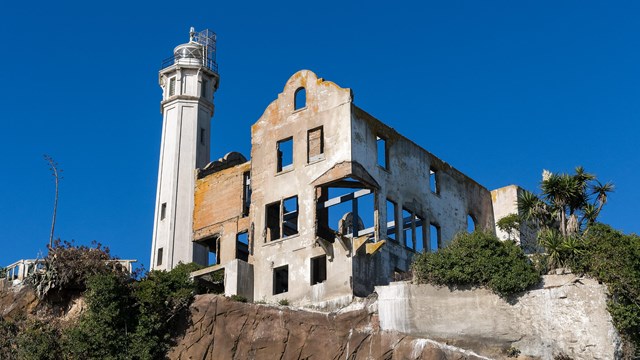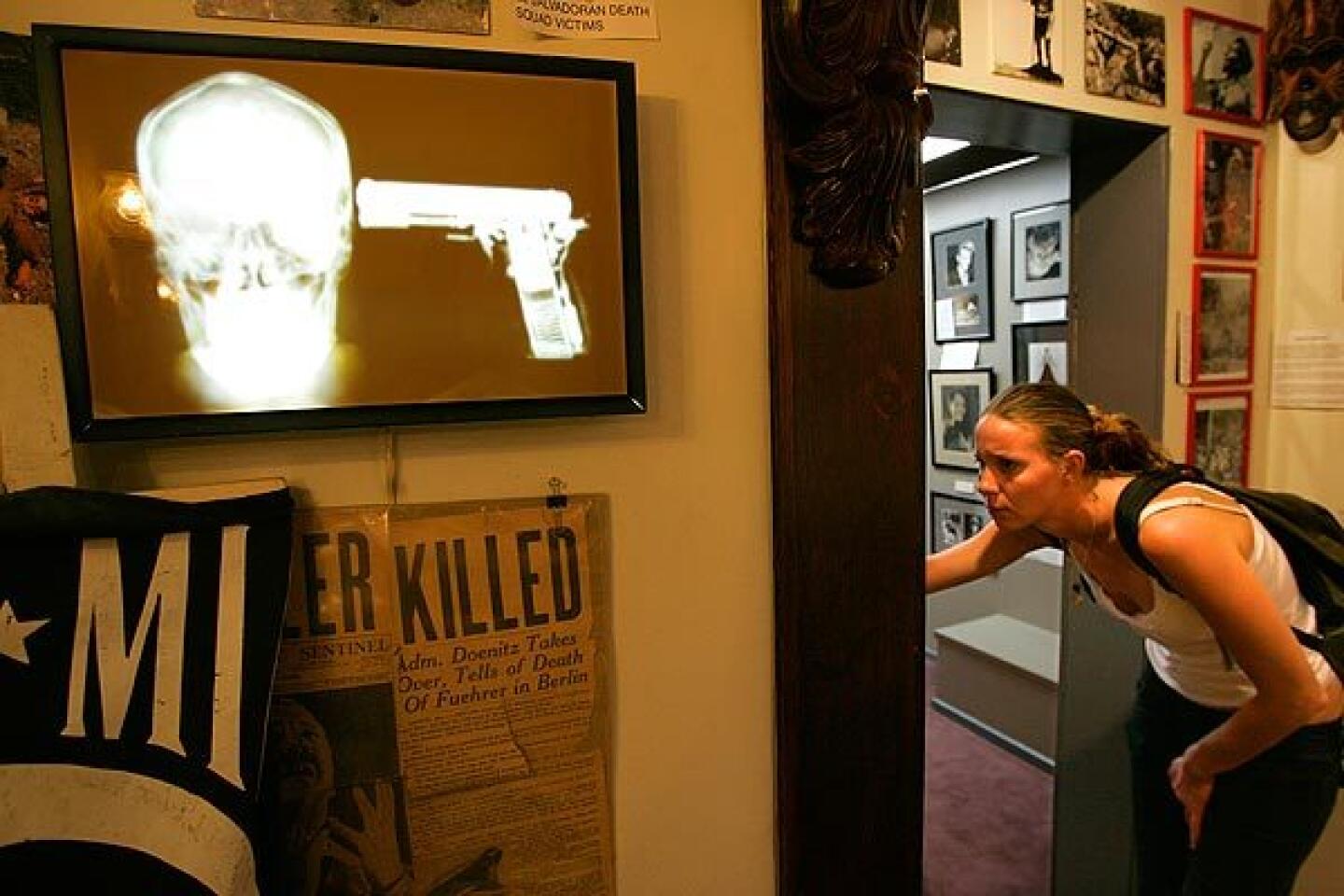Our fascination with true crime is complex. Some may call it macabre, but it’s actually a complex interplay between our curiosity and a deep-rooted desire for justice. True crime museums allow us to satisfy these desires while educating vistors, provoking thought, and triggering conversations about prevention and justice.
Here’s a list of six must-visit true crime museums in the United States that offer true crime enthusiasts the chance to learn more about the country’s most notorious criminals, their infamous deeds, and the relentless pursuit of justice that followed.
The dead cannot cry out for justice. It is a duty of the living to do so for them.
– Lois McMaster Bujold, American fiction writer
Alcatraz Island: San Francisco, USA

Introduction and History:
Alcatraz Island, a forbidding penal colony turned captivating tourist destination, lures visitors to explore the eerie isolation experienced by some of America’s most notorious criminals. Once a maximum-security prison housing the likes of Al Capone and “Machine Gun” Kelly, this infamous institution operated from 1934 to 1963. Dramatically perched in the middle of San Francisco Bay, Alcatraz earned a reputation for extreme security measures and its seemingly inescapable perimeter.
Location and How to Get There:
Accessible only by ferry, the island lies approximately 1.5 miles offshore from San Francisco, California. Alcatraz Cruises operates as the exclusive provider of ferry services, departing from Pier 33 at the Alcatraz Landing. Tickets should be purchased in advance due to high demand, with options for day or night tours.
Featured Exhibits and Highlights:
-
-
- Award-Winning Audio Tour: Experience firsthand accounts from former inmates and staff, which lead you through the eerie cellhouse and its dark tales.
- Trace the Steps: Walk the same hallways as some of America’s most notorious criminals once did, getting a sense of the harsh reality of life within these walls.
- Sagas of Escape Attempts: Discover gripping narratives surrounding the sagas of attempted escapes, and learn about the hard measures of security that made Alcatraz seemingly inescapable.
- Infamous Inmates: Marvel at fascinating insight into the lives and eccentricities of infamous inmates like Al Capone and “Machine Gun” Kelly.
- The Solitude of Solitary Confinement Cells: Encounter the eerie solitude of the solitary confinement cells, offering a chilling insight into the punitive measures of the time.
- Contrasting Views: Appreciate the chilling contrast offered by the sweeping views of vibrant San Francisco, tantalizingly out of reach yet starkly visible from the island.
-
Admission Fees and Visiting Hours:
Ticket prices are all-inclusive of transportation and admission. Fees vary based on age and chosen tour, with adult fares for day tours starting at around $39.90. The park is open year-round, and the first ferry typically departs around 8:45 AM. Various tour options accommodate different interests – from behind-the-scenes explorations to homing in on Alcatraz’s notorious criminals. Additional information and schedules can be found on the Alcatraz Cruises website.
National Museum of Crime and Punishment: Washington D.C., USA

Introduction and History:
Dive deep into the annals of American criminal history at the National Museum of Crime and Punishment. This insightful museum, located in Washington, D.C., offers a comprehensive look into the evolution of crime, law enforcement, and forensic science from the colonial period to the present. With over 1000 artifacts spread across three stories and 28,000 square feet, the museum presents a compelling narrative of criminal justice in the U.S.
Location and How to Get There:
The museum is situated in Washington’s Penn Quarter neighborhood, easily accessible by both car and public transportation. Its address is 575 E Street, NW Washington, D.C.
Featured Exhibits and Highlights:
-
-
- History of Crime: Trace the evolution of American crime from piracy and the Wild West to modern cybercrime.
- CSI Experience: A hands-on, immersive exhibit allows visitors to role-play as crime scene investigators.
- Gallery of Notorious Criminals: Learn about infamous figures from Bonnie and Clyde to Al Capone.
- Punishment: The Consequence of Crime: Explore the prison system, punishments, and the death penalty through the ages.
- America’s Most Wanted Studio: Step inside a recreated studio of the famed TV show hosted by John Walsh.
-
Admission Fees and Visiting Hours:
The museum is open seven days a week from 10 AM to 6 PM, with extending hours during peak season. General admission is $21.95 for adults and $14.95 for children (5-11), while senior citizens and law enforcement personnel pay $16.95. Further details can be found on the official website.
The Mob Museum: Las Vegas, USA

Introduction and History:
Dive into the fascinating and intense world of organized crime at The Mob Museum, officially known as the National Museum of Organized Crime and Law Enforcement. This landmark cultural institution, located in the heart of downtown Las Vegas, offers a bold, authentic view of the gritty underground mob world and the relentless law enforcers who fought against it. The museum, housed in a historic former courthouse and U.S. Post Office, opened its doors in 2012 and has been thrilling visitors with its engaging, multi-story exhibitions ever since.
Location and How to Get There:
The Mob Museum is located at 300 Stewart Avenue, Las Vegas, Nevada. It’s easily accessible by public transportation, rideshares, or personal vehicles. There are several nearby public parking options available.
Featured Exhibits and Highlights:
-
-
- The Mob’s Greatest Hits: A visual storytelling of some of the Mob’s most ‘successful’ hits.
- St. Valentine’s Day Massacre Wall: An actual wall from Chicago’s 1929 massacre stained with bullet holes.
- Prohibition History: Learn about the era of Prohibition and its role in mob history.
- The Underground: A fully operational distillery and speakeasy, representing the Prohibition era.
- Organized Crime Today: Understand how organized crime functions in current society.
-
Admission Fees and Visiting Hours:
The Mob Museum is open daily from 9 AM to 9 PM. General admission starts at $24.95 for adults, if booked online. Discounts are offered for seniors, teachers, law enforcement, military, and children. Visit their official website for more details and to book tickets.
Eastern State Penitentiary: Pennsylvania, USA

Introduction and History:
Eastern State Penitentiary, one of the most historic sites in Philadelphia, stands as an imposing relic of bygone justice systems. First opened in 1829, this pioneering institution introduced revolutionary innovations in correctional administration, including separate incarceration, which laid the groundwork for the modern penitentiary system. During its 142 years of operation, the prison housed some 75,000 inmates, including notorious criminals like Al Capone and Willie Sutton. Today, as a National Historic Landmark, it offers somber yet intriguing exploration into criminal justice history of the United States.
???? Interested in delving deeper into Eastern State Penitentiary right now? Read more from CrimeDoor.
Location and How to Get There:
Located at 2027 Fairmount Avenue, Philadelphia, Pennsylvania, the Eastern State Penitentiary is easily accessible by public transportation, bike, or car. Public parking is available nearby.
Featured Exhibits and Highlights:
-
-
- Cellblock Tour: Explore the long-abandoned cellblocks, including the notable luxury cell of Al Capone.
- Hands-on History: Engage with brief, interactive experiences covering key historical facts about the penitentiary.
- Art Installations: Discover inmate-installed art bringing darkness and contemplation into prison life.
- Big Graph: Learn about U.S. incarceration rate shifts over time worldwide by studying the 16-foot tall bar graph.
-
Admission Fees and Visiting Hours:
Eastern State Penitentiary is open everyday, from 10 AM to 5 PM. When purchasing online, daytime tour admission is $21 for adults, $19 for seniors, and $17 for students and children ages 7-12. When purchasing at the door, daytime tour admission is $23, $21, and $19, respectively. (Not recommended for children under the age of seven.) Visit the official website to purchase tickets and for more information on exhibits and tours.
Museum of Death: Holllywood, California and New Orleans, USA

Introduction and History:
A walk through life’s final journey awaits you at the Museum of Death. Tracing its roots back to the 1990s, this distinct institution houses an extensive collection of artworks, crime scene evidence, mortician tools, and historical funeral exhibits, all with a dedicated mission to educate the public about death and its associated rituals.
Locations:
The Museum of Death boasts two locations in the United States:
-
- Hollywood, California: Positioned at 6031 Hollywood Blvd, the Hollywood branch of the Museum of Death is in easy reach for anyone keen to understand the grim inevitable.
- New Orleans, Louisiana: Rooted in the historic French Quarter at 227 Dauphine St, this branch brings a unique blend of dark realism and cultural fascination to the city renowned for its rich heritage and vibrant nightlife.
Featured Exhibits and Highlights:
-
-
- Serial Killer Artwork: A fascinating collection of original art made by notorious serial criminals.
- Authentic Crime Scene Photos: Confronting images directly from notorious crime scenes.
- Historic Funeral Paraphernalia: Instruments used in embalming, porcelains, coffins, and mourning attires throughout history.
- Cult Memorabilia: A display of objects and related items associated with infamous death cults.
-
Admission and Visiting Hours:
Visit the Hollywood location seven days a week, from 11 AM to 7 PM with an admission fee of $20. The New Orleans location opens its doors from 10 AM to 6 PM, with an admission fee of $17. Tickets can be purchased at each respective location. For more detailed information and specific exhibits at each location, visit their official website.
Final Thoughts: Embracing Your Inner Dark Tourist
Whether it’s unmasking the mobster history in Las Vegas, exploring the abandoned cellblocks of Pennsylvania’s Eastern State Penitentiary, or delving into the enigma of death in Hollywood, a tour through any of these museums guarantees a gripping encounter with the past. Remember to check the respective websites for the most updated information on opening hours and ticket prices. Always plan ahead, particularly if sensitive content is involved, and embrace the chance to expand your understanding of these less-illuminated aspects of our world.


3 Responses
I absolutely agree with you! True crime has always been a captivating subject, and it’s fascinating to explore the psychology behind our obsession with it. I enjoyed reading your post and found it thought-provoking. In fact, I think it’s such an interesting topic that I would love to share it on my own social media platforms or website to help promote it. Let me know if that’s something you’d be interested in, as I believe it deserves a wider audience. Keep up the great work
“True crime is a reflection of our society’s deep-rooted curiosity about the darker aspects of human nature.”
This quote resonates with the post because it highlights the complexity of our fascination with true crime. It acknowledges that our interest in these stories goes beyond mere entertainment; it reflects our curiosity about the depths of human nature and the darker side of society. True crime stories often delve into the motives, psychology, and consequences of criminal behavior, allowing us to explore the complexities of human behavior and the
I completely agree that our fascination with true crime is complex. On one hand, it can be seen as a morbid curiosity, where we are drawn to the dark and mysterious aspects of human nature. True crime stories often provide a glimpse into the minds of criminals and the motives behind their actions, which can be both intriguing and terrifying.
However, I believe there is also a psychological aspect to our fascination with true crime. It allows us to explore our own fears and anxieties in a safe and controlled